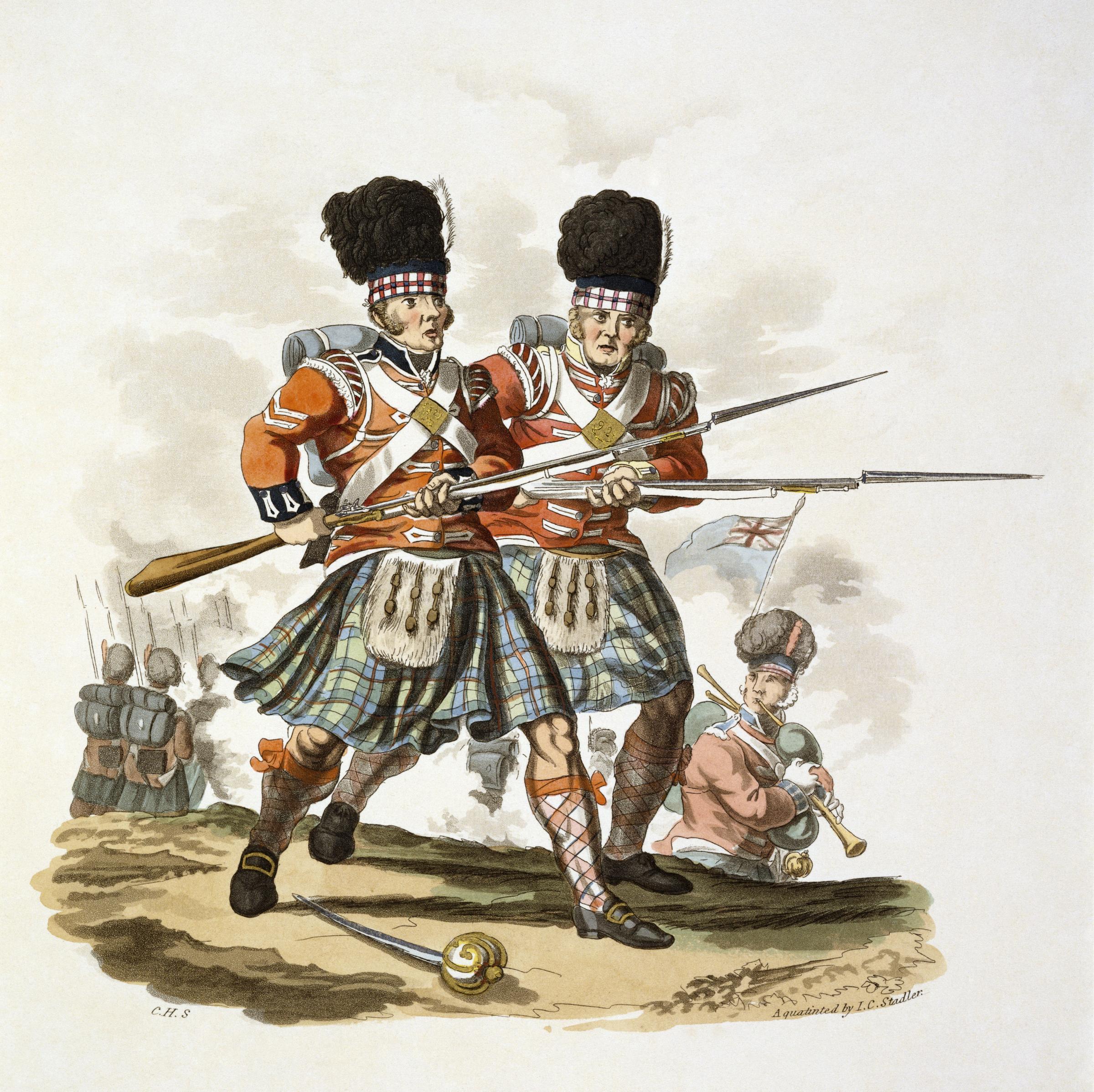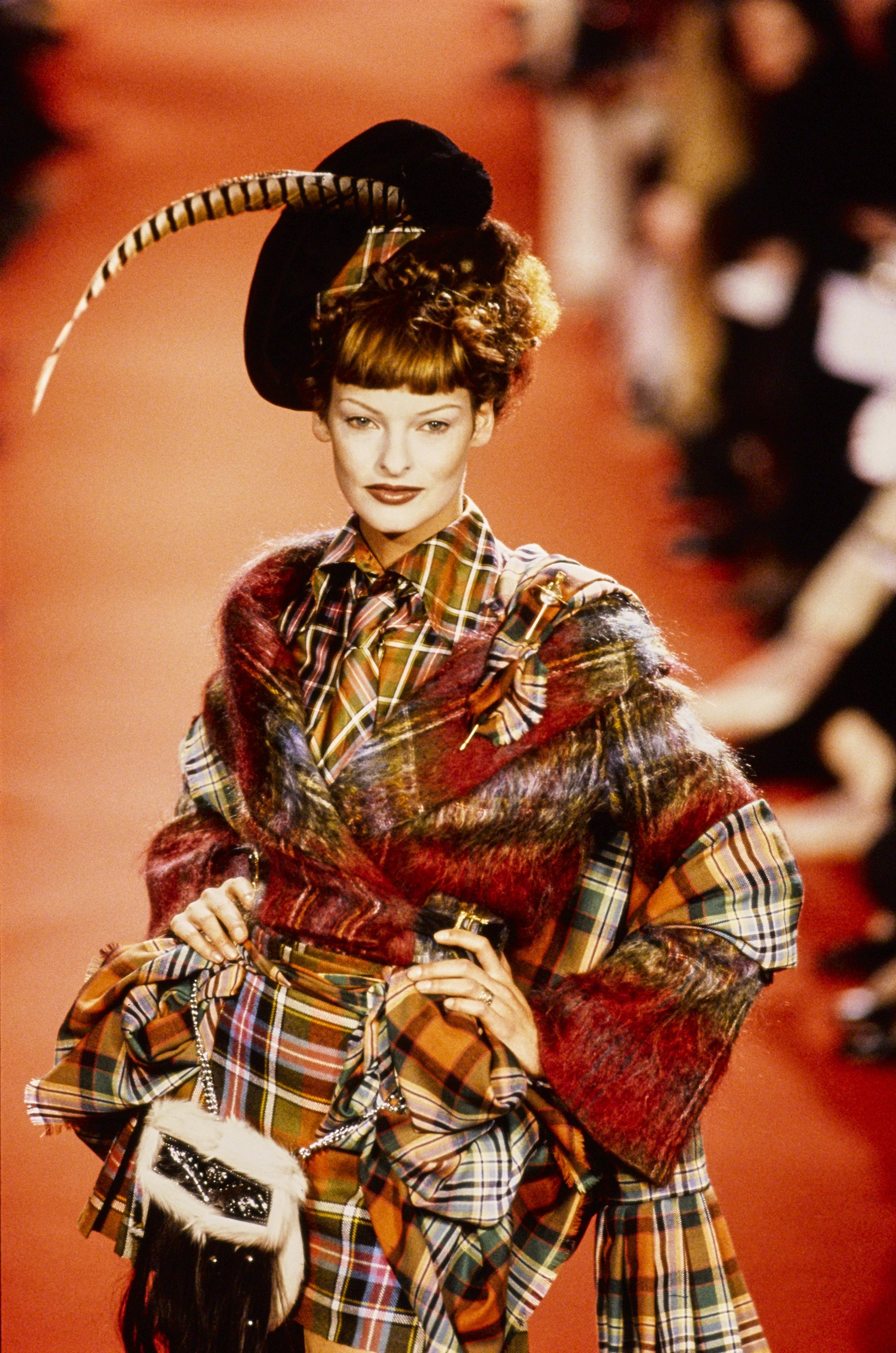
TARTAN was a rebel cloth. It is well known that in the Act of Proscription following Culloden it was stated: “That from and after the first day of August [1747]….no man or boy … other than such as shall be employed as officers and soldiers in his Majesty’s forces …shall … wear or put on the clothes commonly called Highland Clothes (that is to say) the plaid, philebeg, or little kilt, trowse, shoulder belts, or any part whatsoever of what peculiarly belongs to the highland garb; and that no tartan, or party-coloured plaid or stuff shall be use”.
This was to apply to the whole of Scotland, not just the “Highland” counties.
It was zealously enforced by the British Army – less zealously by the sheriffs – and one of the punishments was to enlist tartan wearers forcibly into the army, where alone they could wear the proscribed cloth.
Less well known is why this happened. Clan tartans were not invented by Wilsons of Bannockburn or the Sobieski Stuarts in the 19th century, though undoubtedly existing tartans were extensively altered and codified in the interests of creating badges of ethnic belonging and commercial opportunity, through the “ancient”, “hunting” and other variants.
Tartan was strongly associated in previous centuries with the patriotic north of Scotland: the idea that the further north you went in Scotland the more patriotic people were was an old one.

James V had tartan clothes made, and after the deposition of James VII and II in 1689, tartan was used to uniform the Jacobite forces who supported his family’s restoration, and with it Irish Catholic rights or an end to Union in Scotland.
In 1713, a distinctive Edinburgh Jacobite pattern was created, to allow mute opposition to the government to be expressed widely in civil society. Because tartan was not a seditious or treasonable statement or publication, its use lay beyond the scope of existing laws: everyone knew what it might mean, but no-one could prosecute it. As a result, it was hated, still more after the Rising of 1745 when the whole Jacobite army with the exception of the Irish and Scottish troops in the French service wore it – it was used even by the Manchester Regiment – as a symbol of Scottish liberty dedicated to the freedom of the British kingdoms.
Tartan was so potent that it had to be repurposed for British patriotism through use in the British Army.
It remained associated with virility: in 1793-94, one of its strongest supporters, the Duchess of Gordon, supported the raising of the Gordon Highlanders by allegedly giving each volunteer the opportunity to take the King’s shilling from between her lips in a kiss.
It was also associated with Scottish family and ethnicity, and in the 19th century its codification into “clan” tartans (the Highland Society of London started this in 1815, the same year that the Society of True (ethnically pure) Highlanders was formed) made it a visible sign of Scottish bloodline, a badge of local identity in a multicultural empire.
Strongly associated with masculinity and the military, evening dress based on tartan reflected these associations, from its polished buttons and epaulettes to the wearing of the clan badge a small distance from the edge of the kilt to allow the suggestion of an opening in the garment. Tartan became a fossilised British version of the Scottish rebel cloth, and as such was scorned and attacked by the cultural nationalists of the 1960s and 70s.
Yet at the moment when this negative view of tartan reached its peak among Scotland’s cultural elites, tartan began to be modernised at a more popular level.
This revival was first seen at scale in the stage performances of Noddy Holder and Slade, Rod Stewart and the Bay City Rollers in the 1970s (although Bill Haley And His Comets had introduced tartan to pop two decades earlier).
Following the trial of the “Tartan Army” extremists in 1975-76 and alongside the increasing adoption of tartan by the Scottish supporters of ‘Ally’s Army’ in Scotland’s ill-fated football World Cup adventure in Argentina in 1978, the singer Andy Cameron released a song, Ally’s Tartan Army (1977), which adopted the tune of an Irish rebel song (God Save Ireland, commemorating three Fenian activists hanged in Manchester in 1867) in its chorus.
While “Ally” disappeared from the scene, the term “Tartan Army” endured as a description of Scotand football supporters, whose tartan outfits tended to get more extreme as the years progressed, not least to mark them out from England supporters, increasingly seen as badly behaved abroad from the Heysel disaster of 1985 onwards.
IN the same decade as tartan rose to prominence in mainstream pop music and football, it was adopted by punk. Vivienne Westwood repurposed tartan’s clichéd associations with the military, the professions, the traditionalist diaspora and nationalist or Unionist eccentrics into a statement of radical chic associated with her counterculturalism in the 1970s and 80s.
Even her shop assistants at Seditionaries – a title with deep roots in the Jacobite era – were uniformed in it at one point, and this readoption of tartan as the “seditious” rebel cloth marked a major shift back into the international mainstream, where Westwood repeatedly incorporated tartan as a shorthand for rebellion, masquerade and historical collage.
Through punk, tartan made “anarchy, alienation and indeed sedition wearable”, and this return to its 18th-century status as a sartorial disruptor, a dress of (potentially rebel) associational identity and not merely family, began to be marked in Scotland also.
Tartan once again began to develop – most obviously at weddings where it was all but absent in 1975 and much closer to being ubiquitous by 2000, but also elsewhere – into a form of social bond, a collective statement of self.
As in the 18th century, this self was inclusive and celebrated patriotism and Scottish association in a much looser way than the bloodline entitlement model of the British Empire had done.
New Scots were included: the Sikh tartan dates from 1999, the Chinese Scottish and Polish tartan appeared in 2006 and the Spirit of Pakistan in 2013. From being a badge of family and bloodline for almost two centuries, tartan had returned to its early modern roots as a textile of group loyalty and political and geographical association.
International representations of Scotland combined this sense of national belonging with the counter cultural revival of the tartan as a rebel cloth pioneered by Westwood.
Tartan started to accompany, echo and even initiate fashion trends: fashion historians such as Jonathan Faiers noted that the 1990s grunge look made its way into Braveheart’s costumes, while Westwood’s designs also continued to evolve the way in which tartan was incorporated into style. Then a further transformation of tartan towards the political occurred in Alexander McQueen’s Highland Rape collection of 1995-96, which was followed by his Widows of Culloden (2006-7) and other references to Scottish experience: collections which expressed in McQueen’s own words “England’s rape of Scotland”.
The shrouds, suggestively ripped clothes, and partial revisiting of tartanry in the first full collection were returned to in the second in greater complexity.
In Widows of Culloden, torn 18th-century dresses, sporting tweeds with fantastical dead bird hats in ironic homage to Victorian Highlandism, fighter plane and antler hats, black-stained clothing and tartan culottes, all symbolically commented on the destruction, misprision and exploitative reinterpretation of Scotland for a global audience, the occasional appearance of a Sam Browne belt providing a visual hint of Irish Republicanism.

Tartan has continued to be a powerful fashion signifier into the 21st century: the sale of an alleged plaid of Charles Edward Stuart in 1999 seems to have been a catalyst for the referencing of it in numerous designs, including a 2004-5 season coat by Marc Jacobs for Louis Vuitton.
More recently, Bronson van Wyck’s interior designs have shown a marked interest in tartan and saltire décor utilising Prince Charles’ tartan and multiple references to the Victorian use/misuse of tartan excess, revisited with both celebration and mild irony, while the tartan look was once again in for the 2020-21 season, with Dior, Gucci, Westwood and others revisiting this apparently timeless rebel cloth.
Some of this went too far for the guardians of masculine Scotland: Gucci’s autumn 2020 tartan dress for men was mocked in the press as a “1970s school uniform”. But the exploration of the limits of tartan shows little sign of abating: Dior’s pre Fall 2022 collection features “a gang of young women layered in punkish tartans”.
From compromising tartan’s signification of masculinity to using it to undercut traditionally ascribed femininity, the fashion houses are to the forefront of the latest transformation of the rebel textile into couture for an age of gender fluidity. The liberation of tartan from army, bloodline and empire into performance, display and political and social comment is one of the great Scottish cultural stories of our age, and one still often overlooked in Scotland. Wear it with pride.
Scotland: The Global History is published by Yale University Press on Tuesday







